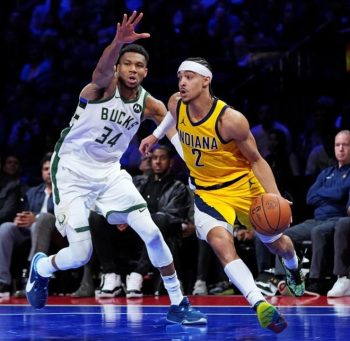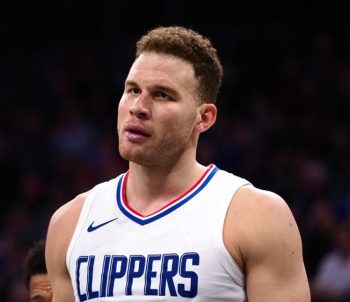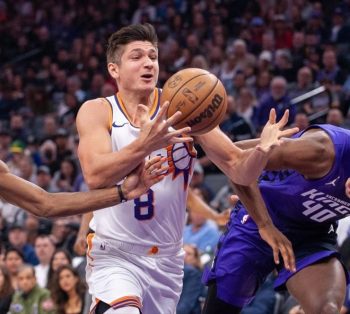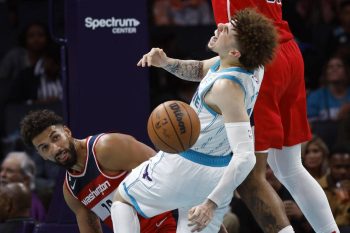NBA
NBA PM: The Player Efficiency Rating Surprises

Today, John Hollinger is most commonly referred to as the Vice President of Basketball Operations for the Western Conference leading Memphis Grizzlies. However, 20 years ago while serving as the editor for OregonLive.com, he developed a statistic called Player Efficiency Rating in an attempt to sum up a player’s value in a single statistic. PER, as it’s more commonly referred to, is a complex formula that takes into account the positive and negative statistics from a player while adjusting them based on minutes played and their team’s pace. It’s now one of the more commonly cited advanced statistics and something that every team, not just Hollinger’s Grizzlies, utilize when putting together a roster.
Advanced analytics have gradually become a bigger part of the NBA over the last several years. It’s a movement that looks like it’s only going to increase as more and more teams continue to buy into them and believe in their effectiveness.
Typically it is the league’s best players that have the best PER. The best career PER’s belong to Michael Jordan (27.91), LeBron James (27.79), Shaquille O’Neal (26.43), David Robinson (26.18), Wilt Chamberlain (26.13) and Chris Paul (25.59). While Hollinger is the first to admit that this isn’t the end-all, be-all to player evaluations, it is one of the most useful new developments in the era of advanced analytics. The league average for PER is 15, and in today’s NBA PM we’re going to take a look at some of the more surprising players whose PER ranks in the top 20. Currently, Anthony Davis has a PER of 37.11, which would go down as the highest single-season rating in league history. However, you have to look no further than the second spot for a surprise:
2) Brandon Wright – Dallas Mavericks (28.36)
Recently called the most efficient player in basketball by Mavericks owner Mark Cuban, Wright certainly has the statistics to back it up. He currently has a true shooting percentage of .758, second only to Tyler Zeller, who we’ll talk more about shortly. Wright, as a strong defender who does some of the little things like hedging on pick-and-rolls and being a willing helper that aren’t taken into account by PER, is by far the biggest surprise in the top 20, but his astronomical shooting percentage has a lot to do with it. Wright is only averaging 3.8 rebounds a game and playing just 18.2 minutes a night, so his PER shouldn’t be used as a reason to start mentioning him as one of the league’s best or even the league’s most under-utilized players. As a six-year veteran, his chances of becoming a star are likely gone, but what his PER does show is that Wright has accepted the role head coach Rick Carlisle has asked him to play, and is thriving in it in a major way. His per-36 minute averages are impressive, but not worth noting because there’s reasons why he doesn’t play those kind of minutes (being foul prone and limited offensively, specifically). It’s highly unlikely if he were playing 36 minutes a night that those projections would hold true.
3) Marreese Speights – Golden State Warriors (27.66)
A lot of the things stated above in regards to Wright hold true for Speights as well. Warriors head coach Steve Kerr took over for Mark Jackson this summer and brought a more ball-movement oriented system with him rather than Jackson’s isolation-heavy offensive approach and Speights has been a major beneficiary from it. His averages of 9.8 points and 4.3 rebounds rank near the best in his career, and his PER greatly benefits from his 63 percent shooting from the field and 84 percent shooting from the field. With six years of experience, though, this should be viewed more as Speights excelling in the absolute ideal situation for himself rather than his arrival as a big-time player. Teams have given him the opportunity to play more minutes in the past and he simply hasn’t been consistent and effective enough to warrant a starter’s role. But, he can play in the league for another 10 years doing what he’s doing now for the Warriors if he keeps up this kind of efficiency.
10) Derrick Favors – Utah Jazz (24.47)
Now, at 23 years of age and an emerging centerpiece for the young Jazz, Favors’ success should be looked at as his official arrival as one of the league’s best players at his position. After an underwhelming start to his career where he was battling for minutes behind Al Jefferson and Paul Millsap, Favors is now a leader of the Jazz and someone they look to carry them on a nightly basis. He’s putting up career-bests in shooting percentage (.589) and points (16.9), while averaging 1.5 blocks, 8.3 rebounds and 1.7 assists. Over the last three years, Favors has steadily progressed and shown marked improvement every season. The Jazz, who wisely signed him to a reasonable contract extension that he is proving to be more than worthy of so far prior to last season, hope that he still has another level he can take his game to, and there’s no reason to think that he’s close to his ceiling yet.
15) Tyler Zeller – Boston Celtics (23.20)
The move from Cleveland, where he became expendable during a very busy offseason for the Cavaliers, to Boston has proven to be a good one for Zeller so far. He played an extensive role for the Cavaliers during his rookie season, but saw his minutes nearly cut in half his as a sophomore. With Boston, he’s actually playing less than he did last year, but he has been far more effective in Brad Stevens’ system than Mike Brown’s. Zeller is connecting on a ridiculous 86.2 percent of his attempts from the field. Part of that is because he’s being very selective and only taking quality, close shots, but he’s also dishing out 1.3 assists, shooting 78.9 percent from the free throw line and grabbing nearly three rebounds a game during his 14.4 minutes a night. Even at 24 years of age, Zeller is probably more in the class of Speights and Wright than Favors, but he’s clearly establishing himself as an NBA-caliber player and developing some staying power, perhaps long-term with the Celtics.
20) Jimmy Butler – Chicago Bulls (22.70)
Right about now, the Chicago Bulls are probably kicking themselves that they didn’t lock Butler up to a less than max extension prior to the October 31 deadline because he’s currently playing his way into a max contract this offseason. Butler is putting up 21.3 points, 3.9 assists, 6.2 rebounds and 1.4 steals a game while playing 40 minutes a game for the championship contender Bulls. He’s one of the premier two-way shooting guards, who will likely get a deal similar to the one Golden State Warriors guard Klay Thompson got (four years, $70 million) prior to the same deadline. This is the first time in his career where Butler’s true value is reflected by his stat line, even though it doesn’t take into account his toughness and defensive versatility, the two things that got him in the league. However, Butler’s offensive game has improved enough to the point where you can look at his numbers and only take away one thing: he’s now a star.
Other Notables
A.J. Price (Indiana Pacers – 22.64 PER, 21st), Dennis Schroder (Atlanta Hawks – 22.64 PER, 23rd), Chris Kaman (Portland Trail Blazers – 21.29, 29th)
Bottom Five
Kyle Anderson (San Antonio Spurs), Austin Daye (San Antonio Spurs), Mike Miller (Cleveland Cavaliers), C.J. Miles (Indiana Pacers) and Kent Bazemore (Atlanta Hawks)











